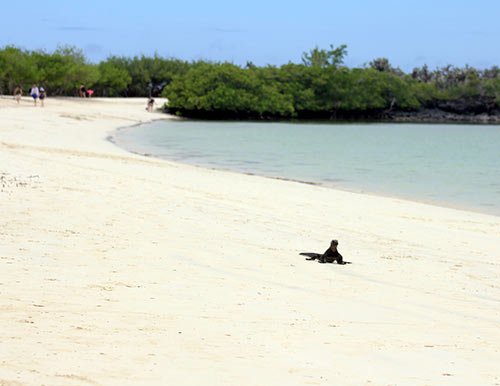This Expedition Cruise will take you to the Galapagos Islands. On Española - the oldest, and perhaps the most green of all the Galapagos Islands - incredible hiking awaits. The Galapagos Islands are home to many unique species. You can expect to encounter the Española Mockingbird and the Española lava lizard. You can enjoy breathtaking views, dinghy trips, and up-close encounters with some of the Archipelago's most famous birds. Nazca Boobies , red-footed Boobies and other species are all present. Rabida is a great place to see wild flamingos, and you can also walk along a red-sand beach. San Cristobal offers the opportunity to swim in clear water, snorkel with sea lions, and relax on white sandy beaches. You can also learn about the evolution giant turtles. You will be able to see the famous Galapagos Giant Tortoises and gain knowledge about their preservation. You will enjoy a short walk in Santa Fe, where you'll be able to see Galapagos hawks Darwin's finches and Galapagos mockingbirds. Galapagos Sea Lions. Santiago is an island that was once inhabited by pirates. You can enjoy hiking and dinghy riding. South Plaza, with its many species of animals and plants that live in a relatively small space is one of best experiences for visitors to Galapagos.
Day by day
Map

Preview

Preview

Preview
Cruise Includes
Cabin accommodation on board Reina Silvia Voyager
All meals whilst on board including snacks
Guiding and lectures by Galapagos Naturalist Guide
English speaking expedition team
Cruise does not include
Return airfares from mainland Ecuador
Galapagos National Park Entrance Fee (USD 200 per person subject to change)
Galapagos Transit Control Card (US$20 per person subject to change)
Travel insurance
Beverages (other than tea and coffee)
Personal expenses such as laundry, on-board communication
Highlights
Visit the white sandy beach of Gardner Bay and the bird colonies of Punta Suárez
See Nazca boobies, red-footed boobies and swallow-tailed gulls.
Look for wading flamingos and nesting pelicans before heading out to do some snorkelling.